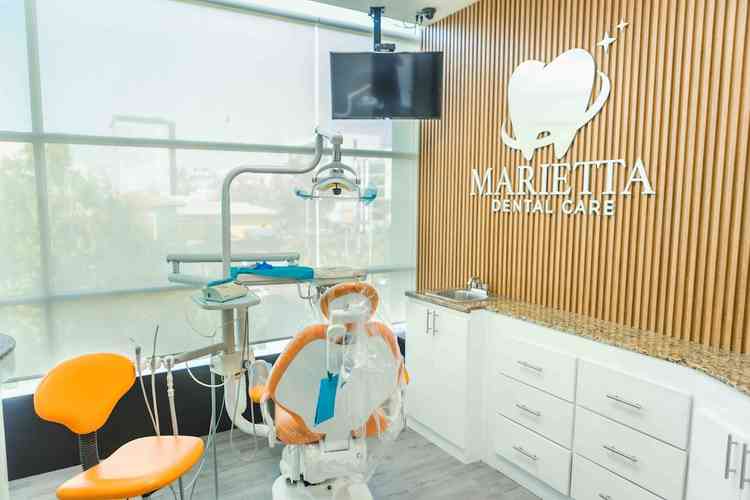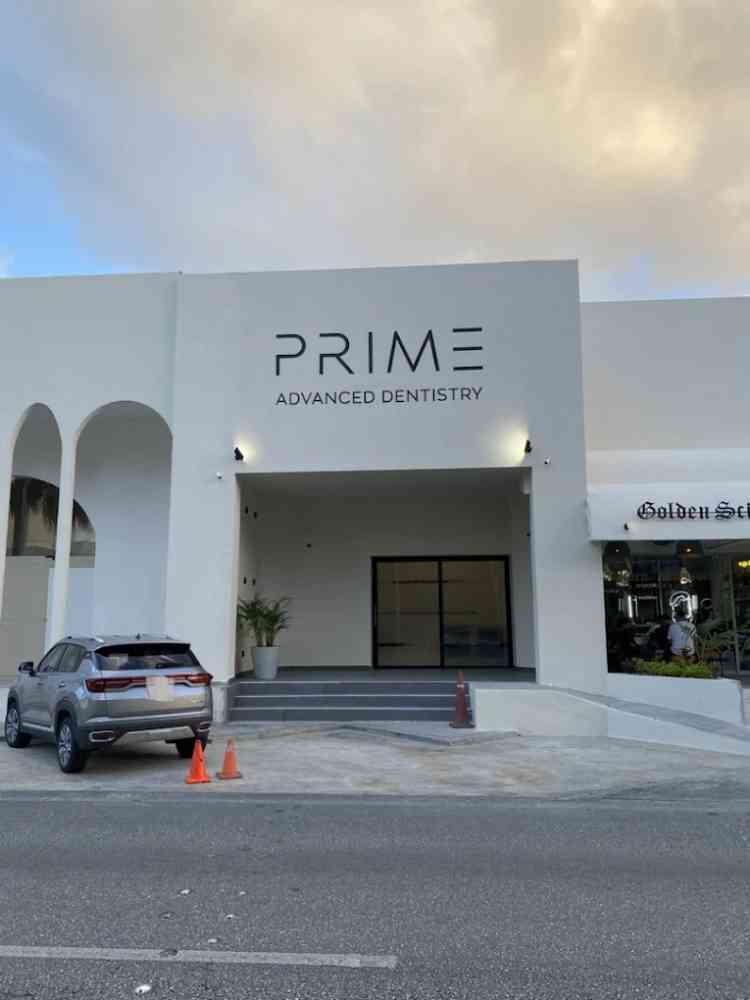Are Root Canals Actually Dangerous or Just Misunderstood?

Prathyusha Itikarlapalli
- Content Writer

Gustavo Moreno Vargas
- Reviewed by

Table of contents
None
Key Takeaways
- Root canals are a safe procedure that does not harm teeth. They preserve the natural tooth by clearing off the infection, eliminating the need for extraction.
- Root canal treatment can be dangerous and pose severe risks when performed wrongly. Instrumental fractures, drilling too deep, and the formation of ledges are serious complications that require expert care.
- Root canal therapy should be performed by a qualified and experienced dentist, using advanced technology and following the appropriate aftercare to avoid the chances of re-infection or treatment failure.
A Brief on Root Canal Treatment
While dental cavities are a significant cause of pain and sensitivity, root canal therapy offers relief by clearing the existing infection. Dentists make small holes to access and clean the infected canals and remove the diseased tooth pulp and debris. They perform root canal treatment using specialized tools and equipment, as the natural tooth root canals are too tiny and hard to access. Although many home remedies are available, these primarily deal with inflammation of the tooth and surrounding tissues to relieve the pain. They do not clear off the growing infection, which is strictly possible under the supervision of a qualified dental professional.
When Are Root Canals Needed?
One needs root canal treatment when the tooth infection has reached the pulp, crossing the enamel and dentin layers. Oral bacteria enter into the tooth structure through cavities, causing tooth infections. You will experience symptoms of intense, throbbing pain deep inside the tooth, sensitivity to hot or cold foods, along with swelling and inflammation. Some severe conditions of infection show up as pus-filled boils on the gums adjacent to the infected tooth. While there are many myths about the safety of root canal procedures, it's essential to know the truth before receiving treatment.
Are Root Canals Really Dangerous?
No, the root canal procedure remains safe and effective, provided it is performed correctly. It is the only way to clear the infected tooth pulp. Failing to get the treatment done can lead to the infection spreading to surrounding teeth and other oral and facial structures. Although rare, an untreated tooth infection can spread to the brain and heart or block airways, causing death. While RCT carries a few less severe side effects, like temporary tooth sensitivity and pain, candidates must know that these usually subside with time. Further, more serious long-term side effects like tooth cracking, nasal congestion, or re-infection are inevitable with proper post-treatment care. These risks arise due to negligence and not just because of the procedure itself. To bust away the common myths, it is worth stating that the potential dangers stem from procedural accidents or complications caused by improper handling or inadequate sterilization.
Are Root Canals Bad for Your Teeth: A Brief on the Safety of the Procedure
Root canals within the tooth structure are tiny and microscopic. Reaching them for cleaning requires specialized tools and equipment. Only qualified dental experts can efficiently deal with them. However, a few mishaps can ruin your experience and cause intense damage. We briefed them below.
Perforation
Perforation during the RCT procedure is the accidental hole formation within the tooth structure or the surrounding tissues. Whether it's on the floor of the pulp chamber or the side walls of the root canals, either conditions lead to severe consequences. It can happen due to excessive drilling of teeth to make a cavity or drilling the canals without prior knowledge of their anatomy. A few canals may be curved or narrow, and knowing their true depth and direction before drilling ensures treatment success. Accidental perforations during RCT are serious, leading to pain, inflammation, or bone damage, and finally ending up with tooth extraction.[1] [2]

Instrument Fracture
Root canals, being tiny and narrow, are hard to access, especially those in the molars or premolars. Dentists use specialized handy and rotatory instruments made from stainless steel or nickel-titanium to clean them. Fractured or broken instruments, like dental files, can cause RCT dangers due to wrong implementation. [3] These broken pieces potentially block the root canals, obstructing the cleaning and disinfection, leading to failure. In some cases, it may require root amputation or apicectomy to remove the damaged root portion of the tooth.[4]
Ledge Formation
Forcing the dental instruments or aligning them in the wrong path creates a step or ledge that deviates from the natural root canals. This can happen when the dental files are aggressively used, or the cavities are drilled without prior knowledge of the root canal's natural structure. Irrespective of the reason, ledge formation during RCT can make cleaning inappropriate or filling difficult.
Sodium Hypochlorite Accident
Dentists use liquid irrigants to disinfect and remove tissue remnants and bacteria from the infected root canal before sealing the cavity. Sodium hypochlorite is a popular irrigant with strong anti-bacterial and tissue-dissolving properties. However, in some cases, this gold standard irrigant can cause cytotoxic effects upon contact with the surrounding soft tissues. Excessive instrumentation creating perforations at the root apex or irrigating under too much pressure cause accidental leakage of sodium hypochlorite. Patients see immediate symptoms of pain and swelling that may potentially lead to rare, more severe neurovascular complications. The effects can be long-term, causing motor and sensory symptoms such as tingling sensations or prolonged numbness of the chin, lips, cheeks, and taste alterations. [5] While analgesics and antibiotic doses can offer relief from these symptoms, the serious complications involving nerve damage require surgical intervention.[6]
Inadequate Cleaning
Incomplete cleaning is the most common cause of root canal re-infection. It's worth mentioning that not all root canals are the same, and they vary in size, shape, and number. Further, a few are multiple with complex shapes (molars), while others are simple (incisors). Dentists need to understand the infected tooth anatomy before performing the procedure. Failing with this can lead to inappropriate cleaning, leaving bacteria and debris behind, and causing re-infection. In these cases, you may start experiencing symptoms shortly after the initial treatment.
Is Root Canal a Serious Procedure: Know What Makes It Dangerous
Root canal procedure is a safe procedure. However, there are a few associated risks like any other medical procedure. Knowing what can go wrong doesn’t mean to expect the worst. It's about being smart to make an informed choice. Indeed, it helps you stay safe and ensure you’re choosing the right provider. Below are the most common factors that contribute to the dangerous symptoms of root canal procedures.
Inexperienced Dentist
While root canal treatment is a simple, non-surgical outpatient procedure, it still requires a qualified dental professional to perform it. Accessing the microscopic canals carefully and cleaning them using sophisticated tools demands expertise. The inability to do so potentially causes instrument fractures. Lack of expertise and inability to handle the technique carefully can lead to accidents. Dentists should know the right depth and orientation of the root canals. A skilled dentist can appropriately handle the equipment with the right pressure, spot the hidden canals, and perform the procedure with accuracy.
Tooth Anatomy
Cleaning complex and curved root canals can be challenging. While a missed canal means a probable recurrence of infection, narrow curvatures can make it difficult to access them. Further, handling without proper knowledge of the root canal angle or orientation often leads to ledge formation or perforation.
Toxic Root Canal Symptoms: Know the Consequences of Accidents
The symptoms that follow a root canal accident include persistent pain, tooth sensitivity, swelling, and inflammation. The more serious cases of unsafely performed RCT show up as prolonged numbness, tingling sensations, with loss of taste due to underlying nerve damage or harmful cytotoxic effects. If you hear one of your friends say, "I regret my root canal," do not simply relate to yourself and delay your procedure. Know the tips to avoid it, and remember, an informed decision can save your tooth and a bad experience, too.
Tips To Avoid the Long-Term Side Effects of Root Canal
Whether a root canal dangerous or not, it doesn’t have to be scary. In fact, when done right, RCT saves your tooth from extraction, offering long-term relief. Note that it can be risky, like any other medical procedure, when handled improperly. Here are a few doable tips to avoid the long-term side effects of root canal therapy.
- Be wise and mindful of your choice. Search for a qualified, skilled, and experienced dental professional who can handle the procedure aptly. Check out the doctor's qualifications, certifications, and years of experience, and look for patient reviews on the clinic's website and social media. Ensure the dentist is clear and transparent regarding treatment protocols and charges for root canal procedures.
- Ask about the tools and technology they use. Remember that relying on advanced imaging options like CBCT and digital X-rays offers a clear picture of tooth anatomy, reducing the possibility of technical errors or missed canals.
- Don’t delay treatment. The longer you delay your dental work, the more likely an infection will spread. It's like worsening the situation, leaving it in hands.
- Follow the aftercare tips strictly, as neglecting them can potentially harm the dental restoration and raise the chances of re-infection.

Understanding the causes and consequences of complications is only part of the picture. Naturally, many patients wonder how safe root canals really are, especially in special situations like pregnancy, or childhood, or if they’ve had multiple treatments before. Read along for tailored answers specific to your situation.
Are Root Canals Dangerous to Your Health?
Root canals are not dangerous and are generally safe when performed appropriately. The method poses temporary and less severe risks, such as sensitivity, pain, swelling, and inflammation. In fact, getting root canal treatment reduces several health risks. Delaying getting a root canal done has serious risks caused by the growing infection. In some cases, it can even spread to other body parts like the brain and heart or obstruct the airways, causing death.
Are Root Canals Safe During Pregnancy?
Root canals do not pose any risk to the growing baby and are generally safe during pregnancy. However, you will need to find the appropriate treatment time based on the body's condition. In most cases, the second trimester can be a comfortable window compared with the first and third trimesters. The first trimester, being a period of heightened nausea and sensitivity, cannot offer a comfortable experience. On the other hand, lying flat on the back reduces blood flow to the fetus due to increased pressure on the lower back during the third trimester. Pregnant women may feel uncomfortable lying flat on their backs on the dental chair during this period. While individual preferences vary with the case, the second trimester usually offers a comfortable experience.
Are Root Canals Dangerous for Kids?
Root canals for kids are performed under local anesthesia and are generally safe. In fact, getting root canal treatment prevents the child's tooth from being extracted. Most parents worry about the after-effects of treatment and anesthesia. However, it is worth stating that the procedure is safe a qualified pediatric dentist performs it. Parents must ensure strict adherence to post-treatment care by limiting their sugar intake and following proper oral hygiene, failing which may relaunch the tooth infection.
Are Old Root Canals Dangerous?
Old root canals are not dangerous as such; however, they can be a potential source of re-infection when oral health is compromised. Failing to follow strict oral hygiene, over-reliance on a sugar diet, or a cracked crown can result in re-infection, adding to the potential dangers.
Are Root Canals Bad for Your Heart?
The misconception that root canals are bad for the heart is quite popular. However, the truth is that getting root canal treatment reduces the risk of heart problems like endocarditis. Untreated root canals can lead to bacterial spread through the bloodstream and enter other body parts like the heart. The bacteria infect the heart valves or inner lining of the heart, causing small growths, inflammation of heart tissues, and death. [7]
How Many Root Canals Does the Average Person Have?
On average, one person can get one root canal treatment per tooth throughout their lifetime. Root canal therapy, when done correctly, leaves results that last for a lifetime. Rarely, in cases of compromised oral hygiene or hidden and complex canals, a candidate would require a repeated RCT. Getting more than one or two root canals isn't inherently harmful, but it may be a sign of broader dental health issues that need attention. Frequent root canals could point to persistent decay, structural problems, or gaps in preventive care. That’s why regular check-ups, good oral hygiene, and working with a skilled dental professional are essential to long-term success.
How Many Root Canals Is Too Many?
While there is no specific limit on the number of root canals a person can get, it's common to get 1-2 root canal therapies. The exact number depends on the extent of infection, oral health, and the candidate's overall gum and jawbone health.
How Long Can a Root Canal Be Left Open?
Dentists seal the cleaned root canals with a filling material to prevent bacteria from re-entering. Leaving a root canal open for an extended period can increase the risk of re-infection. While some patients may experience symptoms like pain or swelling within a few weeks, others might not notice any issues for months. However, continuous exposure to food, saliva, and bacteria allows harmful microorganisms to enter the untreated canal, potentially leading to a deeper infection or even tooth loss. That’s why it’s essential to complete the root canal procedure and have the tooth sealed promptly to protect your long-term oral health.
Root canal procedures are not dangerous or harmful to teeth. However, they should be carried out correctly, or they can fail, which can cause potential problems. All you need to do is find the right professional to get it done and follow a perfect aftercare.
Not sure where to start your journey to healthier teeth? Let Envoy Health take the guesswork out. Sign up today and get matched with a dedicated patient manager who will guide you every step of the way toward expert care and a confident smile.
References
- Accidental Perforations During Root Canal Treatment: An 8-Year Nationwide Perspective On Healthcare Malpractice Claims
- The Management Of Root Perforation: A Review Of The Literature
- Identification Of The Procedural Accidents During Root Canal Preparation Using Digital Intraoral Radiography And Cone Beam Computed Tomography
- Broken Instrument Removal Methods With A Minireview Of The Literature
- Complications And Management Of Sodium Hypochlorite Extrusion In Root Canal Treatment: A Clinical Case Report
- Hypochlorite Accident During Endodontic Therapy With Nerve Damage – A Case Report
- Infective Endocarditis And Oral Health—A Narrative Review
Disclaimer
The information in this article is for educational purposes only and does not replace medical advice. Always consult your doctor before starting any treatments.
Root canals are not bad for teeth; in fact, they help save them. The procedure removes growing bacterial infections and preserves the teeth from extraction. Root canal treatment clears off debris and infected tooth pulp to relieve pain and discomfort caused by infection. Delaying a root canal treatment is indeed bad for your teeth, as it worsens the tooth infection, which in some cases may spread to other oral and facial structures.
Root canals cost between $800 and $1,500 without insurance in the United States. You also need to pay the charges for anesthesia and dental X-rays, which cost around $500 and $200, respectively. The total cost for a root canal procedure may rise slightly higher if you require a dental crown, which adds up to another $1,500, depending on the material used.
Root canals, along with dental crowns, cost you between $1,800 and $5,000, depending on the infection severity, root canal complexity, and dental crown material. Typically, dentists charge higher prices for back teeth with complex root canals. Further, they also require hardy and durable crowns made from zirconium. Crowns made from zirconia cost relatively higher when compared to metal or porcelain-fused metal crowns.
Yes, root canals can seem expensive, especially in developed countries like the United States, where it can cost you between $800 and $1,500 per tooth. A few factors, like tooth location, provider, and restoration type, can make it an expensive procedure. Typically, root canal costs for molars tend to be higher than the front teeth. Further, some dentists in modern metropolitan areas quote expensive prices that may account for clinic maintenance charges and material costs. Further, root canals sealed by fillings cost less when compared to those that require dental crowns.
Root canals in recent days are a painless procedure carried out under local anesthesia. The local anesthetic numbs the gums, so you can barely feel any pain. In case you are anxious about the procedure, a few dentists also carry it out under mild sedation for relaxation. The myth that root canals are painful, in fact, applies to the olden days. However, with the advanced technology, procedures are simple and painless.
A failed root canal is dangerous and occurs when the initial treatment has not completely removed the infection or when the infection has recurred. While some patients do not see noticeable symptoms during the initial period, the growing infection can be dangerous to oral and overall health. It can damage the entire tooth and spread to other body parts like the brain or heart, causing abscess and endocarditis, respectively. In some cases, it can spread to the floor of the mouth, blocking the airways and causing death.
While some fear root canals, neglecting or delaying them can have worse consequences. Postponing root canal therapy can worsen the infection, leading to dental abscesses requiring tooth extraction or dental implants. In rare cases, an untreated tooth infection may spread to the brain, heart, or airways, causing the patient to die.
Root canals cause minor side effects like swelling, pain, and inflammation. These do not last long and subside with time. In case you ask us, are root canals dangerous long term? In rare cases, they may lead to tooth cracking, nasal congestion, or re-infection. Note that proper post-treatment care can avoid these long-term dangers associated with root canal therapy.
Yes, a root canal treatment can cause problems years later due to re-infection. Root canal re-infection after a few years can occur due to compromised oral health or tooth cracks due to biting on hard surfaces. Candidates experience throbbing pain, sensitivity, and inflammation with pus-filled pimples on the gums.
Alternatives to root canals include tooth extraction, followed by replacement options like implants, bridges, or crowns, depending on the tooth location and number. Some patients require pulp capping, where the tooth pulp is partially preserved. Note that extraction is considered the last choice when no other options can save the natural tooth.
So, we partner with the premier healthcare facilities!
Send me the list





